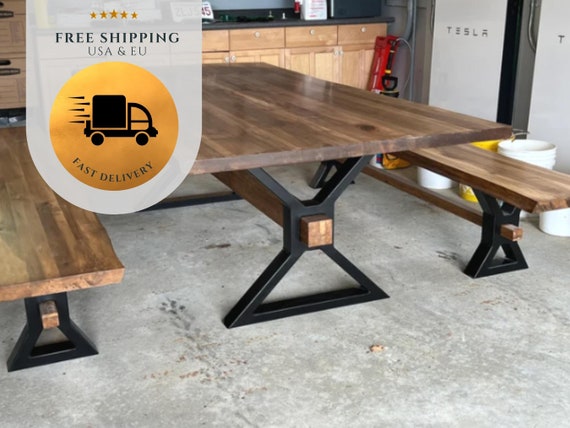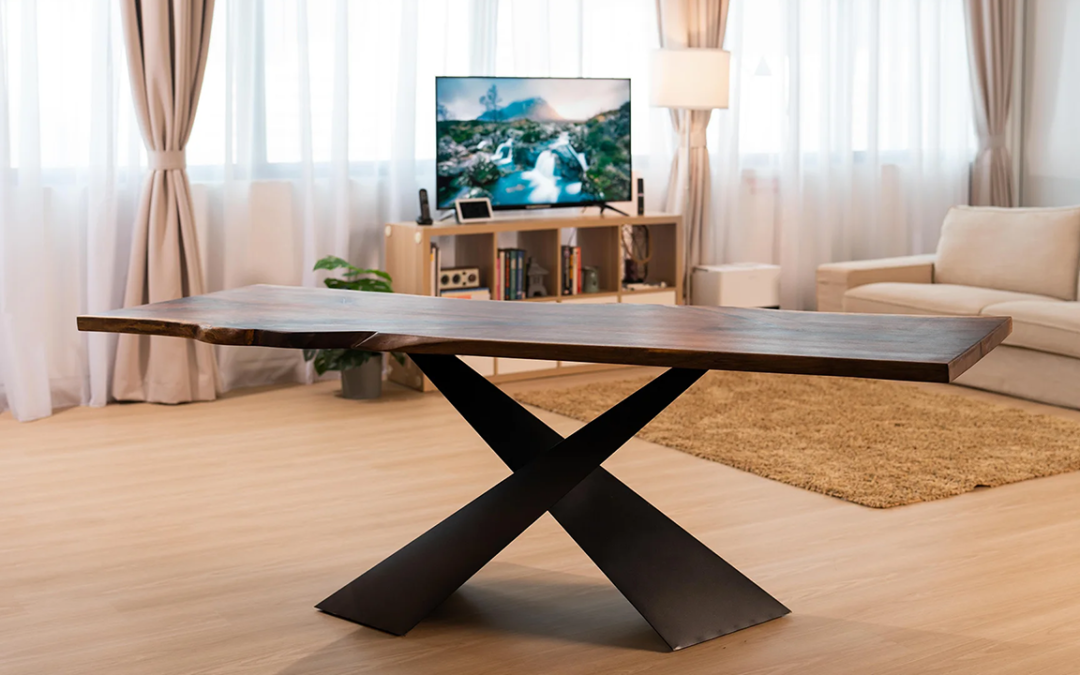From Standard to Modern: Find the Ideal Dining Area Table Legs for Your Design
While timeless designs such as cabriole and turned legs evoke a sense of timeless refinement, contemporary styles like barrette and geometric alternatives offer a chance for striking visual rate of interest. As you think about these aspects, the question remains: exactly how can you flawlessly incorporate these diverse leg styles to create a harmonious eating experience?
Recognizing Table Leg Styles
The variety of dining-room table leg styles can dramatically influence both the visual appeals and capability of the area. Each leg style adds special aesthetic elements and practical features, catering to varied design preferences and usage needs. Comprehending these designs is vital for choosing the appropriate table that straightens with your general interior design vision.
For example, tapered legs use a clean, timeless appearance that can enhance a room's style, while stand bases give stability and optimize legroom, making them excellent for smaller sized rooms. Barrette legs, a hallmark of mid-century contemporary design, present a commercial panache, permitting for a ventilated, open feel. Trestle legs evoke rustic beauty, supplying robust support and a feeling of timelessness.
Additionally, the selection of products plays a substantial function. Wooden legs can bring heat and structure, whereas steel options often communicate a streamlined, contemporary ambiance. Ultimately, recognizing table leg designs is important for producing a natural eating location that reflects personal style while ensuring usefulness and convenience. By attentively considering these aspects, you can boost both the practical and aesthetic allure of your eating room.
Standard Table Leg Options
When picking dining-room table legs, standard alternatives usually embody ageless beauty and workmanship. These designs reflect an abundant heritage and a dedication to top quality, making them ideal for those who appreciate timeless looks.
Among the most iconic traditional leg styles is the cabriole leg, characterized by its graceful rounded form. This design usually features attractive makings and is most commonly found in Queen Anne and Chippendale furniture. One more prominent option is the turned leg, which flaunts a collection of smooth, rounded forms that provide a timeless appearance while preserving security.
In addition, the straight leg, while straightforward, supplies a strong and unadorned structure that can mix effortlessly with a selection of tabletop styles. For those drawn to ornate detailing, claw-and-ball feet legs evoke a feeling of splendour and can work as a stunning focal point in any kind of dining space.
Last but not least, stand bases, although not strictly legs, offer a different standard alternative that enables enough legroom and can be wonderfully carved. Each of these conventional leg styles adds to the general atmosphere of a dining-room, weding function with aesthetic allure.

Modern Table Leg Layouts
Modern table leg designs use a diverse variety of designs that discover here emphasize ingenious products and clean lines. These layouts usually focus on functionality while serving as striking focal factors within an eating room. Minimal aesthetics are common, with legs crafted from materials such as steel, glass, and crafted timber, which add to a modern and ventilated feeling.
One prominent layout is the hairpin leg, defined by its slim, tapered framework that gives stability without overwhelming the tabletop (dining room table legs). This design is usually found in mid-century contemporary furniture and can effortlessly complement different eating table shapes. One more fad is the usage of geometric shapes, where legs may take on angular or asymmetrical kinds, adding visual passion and a touch of creativity

Mixing Styles for Distinct Spaces
Frequently, property owners seek to create unique eating areas that show their personal design by mixing different design components. This technique enables the consolidation of varied aesthetic appeals, causing a harmonious yet unique setting. For example, combining a rustic wooden table with streamlined, contemporary steel legs can produce a captivating contrast that boosts the space's overall allure.
Furthermore, integrating vintage table legs with modern tabletops can stimulate a sense of background while maintaining a contemporary sensibility. Such mixes not just showcase specific taste yet likewise urge imagination, permitting property owners to curate a room go right here that feels both personal and welcoming.
Color plays a crucial function in this mixing process; choosing table legs that enhance or contrast with the existing color pattern can improve aesthetic interest. Whitewashed legs can soften the boldness of a dark table surface area, developing a well balanced visual.
Tips for Selecting the Right Legs
Selecting the right table legs is important for attaining both functionality and aesthetic charm in your eating space. Begin by thinking about the total design of your room. Conventional setups gain from legs that feature elaborate carvings or transformed layouts, while modern spaces may require smooth, minimal designs.
Following, analyze the height and stability of the legs. dining room table legs. Conventional table vary in between 28 to 30 inches in elevation, so make certain the legs complement this measurement for comfort. Additionally, robust materials, such anchor as hardwood or metal, can enhance stability and durability
Assess the leg shape also-- choices consist of directly, tapered, or pedestal styles. Straight legs provide a traditional look, while tapered legs can add a touch of beauty. Pedestal bases offer sufficient legroom and are suitable for smaller sized areas.
Final Thought
In summary, picking the ideal dining area table legs needs careful factor to consider of both modern and standard styles. By integrating leg style, height, and product with the overall decor, a cohesive and welcoming environment can be attained.
The range of eating space table leg designs can substantially influence both the aesthetics and performance of the space. Eventually, understanding table leg styles is vital for creating a cohesive eating area that mirrors personal style while making certain functionality and convenience.One of the most iconic standard leg designs is the cabriole leg, defined by its elegant curved shape. Straight legs supply a timeless appearance, while conical legs can add a touch of sophistication.In summary, choosing the excellent dining area table legs requires mindful consideration of both modern-day and conventional designs.
Comments on “Upgrade Your Furniture with Custom Dining Room Table Legs”